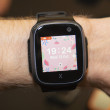Top Five Flagship Handsets of 2017
Dec 29, 2017, 7:00 AM by Eric M. Zeman
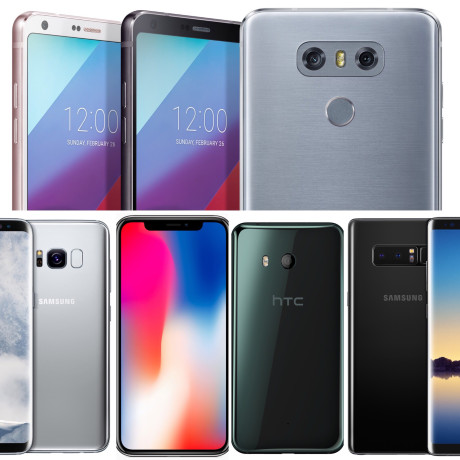
The last twelve months have given us some of the most compelling smartphones ever made. New screen shapes, advanced cameras, and waterproof bodies have improved the everyday experience of those willing to fork over lots of cash for high-end handsets. Here are our picks for the top five flagship smartphones of 2017.
Background
There's no doubt 2017 served as a turning point for smartphones. Though phone makers trot out exciting hardware every year, 2015 and 2016 were devoid of any real groundbreaking changes in terms of technology or features. Many of the flagships we saw from Apple, LG, Samsung, and others during that time were incremental upgrades to previous designs. Thankfully, smartphones began to take a new direction in early 2017.
In February, LG was the first phone maker to debut a device with a 2:1 (18:9) screen with a nearly bezel-less design. This would set the tone for the rest of the year, as more phone makers debuted their own bezel-less hardware.
Dual cameras are another hot trend in 2017. Phones with two main cameras deliver features such as optical zoom, wide-angle shots, or portrait photography. Not every phone took this approach, but a healthy number of the year's top handsets jumped aboard.
Other must-have functions that appeared in 2017 devices included waterproof hardware, rapid charging, advanced software, and blazing processors.
As we move into 2018, you can be sure more phones will adopt these and other killer features.
LG G6
LG delivered one of its finest smartphones in the G6. The phone was a huge step up from the modular (and failed) 2016 G5 and saw LG craft a stunning new piece of hardware. The LG G6 banks on a relatively small form factor with a sturdy metal chassis, glass front and rear panels, and a pleasing design. LG was smart enough to make sure the phone was waterproof. (Seriously, we tested it in the shower.) The phone put to rest any notion that LG didn't know how to design attractive phones.
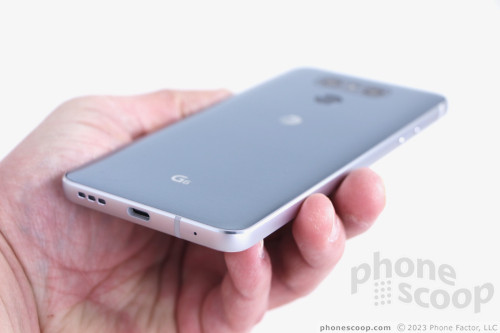
The G6 was an early leader in the 2:1 screen race. The 5.7-inch LCD panel with quad HD+ resolution included some neat software tricks to take advantage of the taller screen, particularly in the camera app. It also was among the first to support HDR+ video playback.
The G6 includes dual 13-megapixel rear cameras with standard and wide-angle lenses, and a powerful selfie shooter. The phone was the first not made by Google to include Google Assistant.
The G6 is for those who value quality across the board.
Samsung Galaxy S8
Though the evolution of Samsung's flagship S series has been consistent, the S8 marked a significant improvement when compared to the previous year's S7. The Samsung Galaxy S8 arrived just a month after the LG G6, and packed many of the same features into an even smaller, slimmer handset. The twin curved glass panels are fitted to a sleek metal chassis in a compact design that's as svelte as it is eye-popping. Samsung managed to squeeze every sought-after hardware feature into an impossibly dainty phone. It's waterproof, too.
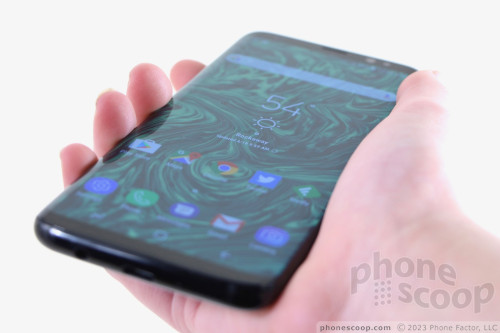
The S8 was the first phone from Samsung to adopt the Infinity Display with a 2:1 aspect ratio and high-resolution 5.8-inch screen. The AMOLED panel boasts some of the slimmest (or least existent) bezels in the business.
Other stand-out features included the iris scanner, Bixby voice-activated assistant (even if it wasn't so good), support for Samsung's NFC/MST-capable Samsung Pay, and the DeX dock that turns the phone into a PC replacement. Oh yeah, the camera kicks butt.
The S8 is a powerful pocket pal for everyday people and is relatively affordable for such a high-end phone.
HTC U11
After several years of iterative updates to its flagship lineup, HTC went for broke with the U11. This sleek Android slab ignored most of the top trends of 2017, but still managed to impress with novel features and excellent performance. The phone comes in an eye-dazzling mirrored blue finish and is among the most attractive devices offered for sale this year. The purity of the rear glass panel is second to none. HTC outdid itself when crafting this device.
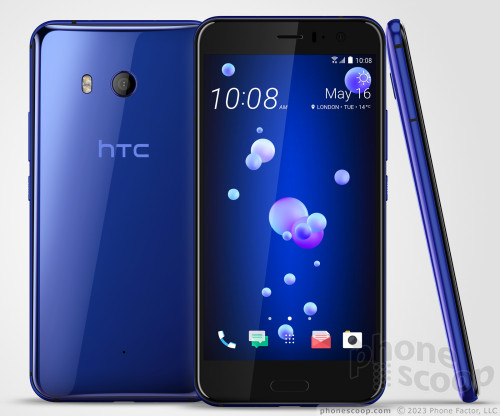
The U11 stuck with the 16:9-shaped screen, but the 5.5-inch LCD display packs quad HD resolution and was brilliant to behold. The U11, like its competitors, is water-resistant.
The most interesting feature of the U11 is the squeezable sides, something HTC calls Edge Sense. With it, you can call up Google Assistant or Amazon Alexa to do you every bidding. (The squeeze feature later appeared on Google's Pixel 2 handsets.) The phone's 12-megapixel camera produces excellent results, even if it doesn't include two lenses. Another feature unique to the HTC U11: personalized audio profiles.
HTC kicked out a fine phone in the U11.
Samsung Galaxy Note8
The Galaxy Note series has always offered over-sized screens, the S Pen stylus, and powerful productivity software. The Note8, which arrived in August, covered these bases in spades. Samsung was sure the Note8 adopted the slim glass-and-metal design of the S8. Like its smaller brother, the Note8 relies on two glass panels fitted to a metal frame. The Note8 isn't as subtle as the S8, but that goes with the territory. It may also be really, really big, and yet it's also a really beautiful piece of hardware.
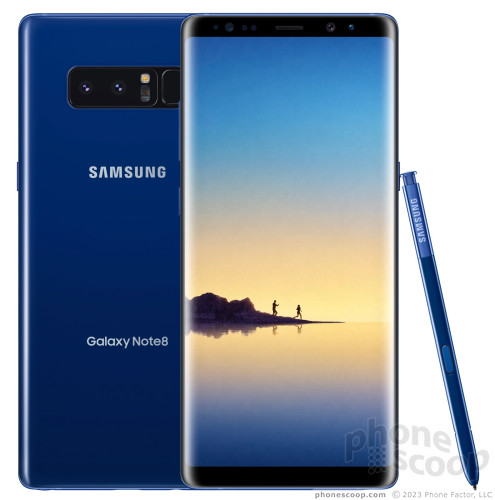
Like the S8, the Note8 adopts the 2:1 Infinity Display but stretches the dimensions to a whopping 6.3 inches. The quad HD+ resolution and incredible AMOLED panel make for the best screen of any phone, ever. This display is another that tacks on HDR+ video playback and it simply dazzles.
Samsung crammed every possible feature into the Note8. Importantly, the Note8 added a second camera to offer users optical zoom. The dual camera array produces some of the best photos you'll see taken with a smartphone. It goes without saying that the Note8 includes a stylus and specialized software to aid in productivity. Pair these with the phone's ability to act as a stand-alone PC when connected to a screen, keyboard, and mouse, and you have a powerful business phone on your hands.
It may be hella big and crazy expensive, but the Galaxy Note8 is the most advanced device available.
Apple iPhone X
The iPhone X is a massive rethink from Apple. The company recycled its iPhone design for three years running and finally shook things up in October with the iPhone X. It drops iPhone staples, such as the home button, and adopts a bezel-less design for the first time. The iPhone X features a stainless steel frame, glass panels front and back, and a 2.1 display that filles nearly every bit of the phone's face. What's most curious about the screen is that Apple switched from LCD — used on every iPhone since the 2007 original — to AMOLED. The result is a screen with dramatically improved contrast. The iPhone X is also waterproof, slim, and really attractive.
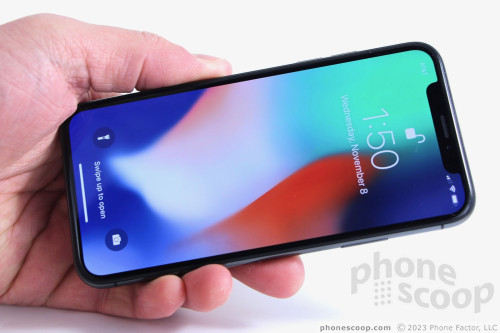
Apple pushed the technology envelope with Face ID, the company's new face-scanning security feature. The iPhone X drops the fingerprint reader and now relies on the owner's face to unlock the phone. It uses lasers to create a 3D model from tens of thousands of microdots projected onto the owners face. More importantly, it processes and locks all this data away in the A11 bionic process. Face ID is the best facial recognition offering from any handset, and Apple went one step further to use the the same underlying tech to create the fun Animoji feature.
A pair of cameras on the back offer some of the most pleasing portrait photography available from a mobile device. The dual cameras also offer 2x optical zoom and 10x digital zoom. The iPhone X has an incredibly powerful camera.
At $999, the iPhone X is one of the most expensive handsets in the market, but some will tell you it is worth every penny.
Honorable Mentions
The LG V30 is a larger, yet sleeker handset than the G6 that borders on perfection with a 6-inch screen. The Google Pixel 2 XL delivers the best native Google experience, has one of the best cameras available and includes squeezable sides to activate Google Assistant. The Huawei Mate 10 Pro is a sleek, powerful device with a pair of AI-assisted cameras that also includes productivity-minded business tools.
Comments
G6 is a strange choice
(continues)
The Moto z2 Force should be on this list.


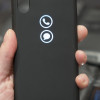 Iconcase Adds Notification Lights to Your iPhone
Iconcase Adds Notification Lights to Your iPhone
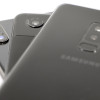 Smartphone Camera Shoot-Out: iPhone X, Pixel 2 XL, Galaxy S9+
Smartphone Camera Shoot-Out: iPhone X, Pixel 2 XL, Galaxy S9+
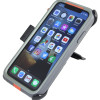 Review: Speck Presidio Ultra Case for iPhone X
Review: Speck Presidio Ultra Case for iPhone X
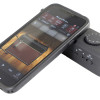 Review: IK Multimedia iRig Pro I/O for iPhone
Review: IK Multimedia iRig Pro I/O for iPhone
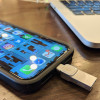 Review: Kingston DataTraveler Duo Bolt for iPhone
Review: Kingston DataTraveler Duo Bolt for iPhone
 LG G6
LG G6
 Samsung Galaxy S8
Samsung Galaxy S8
 HTC U11
HTC U11
